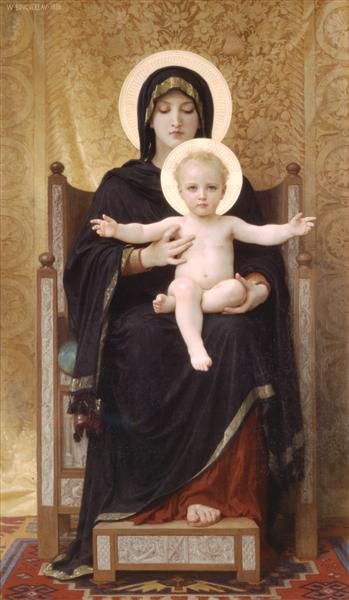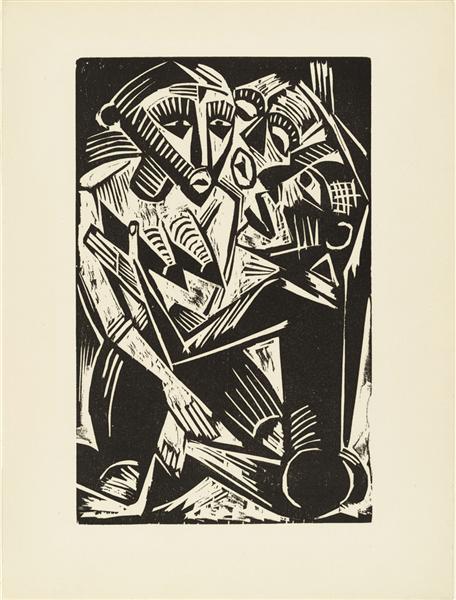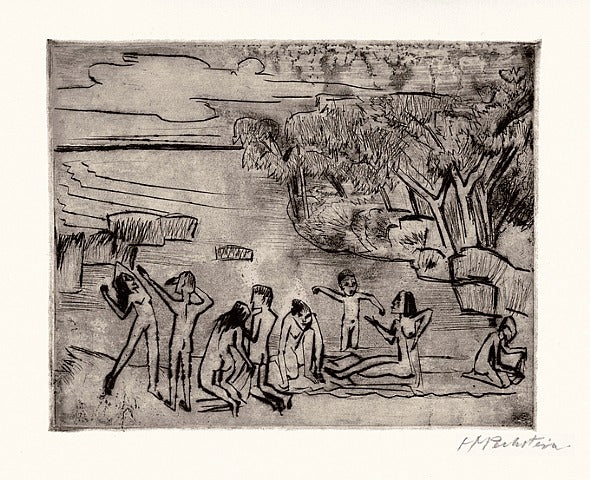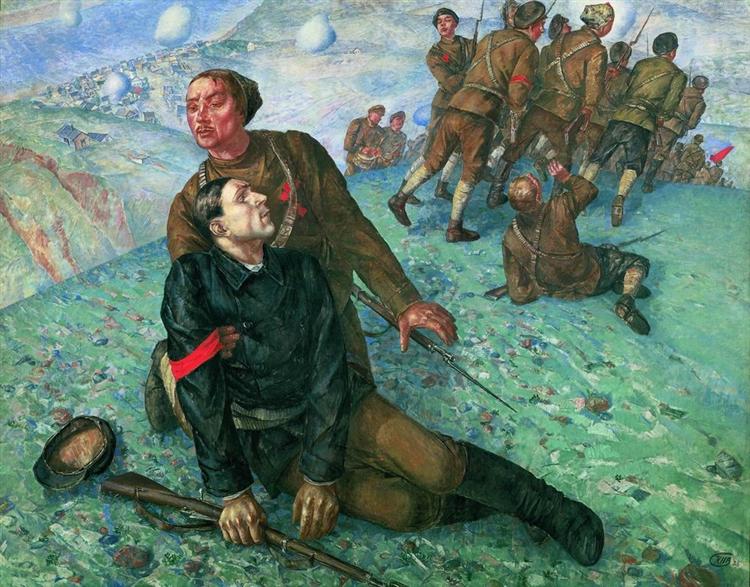Description
The work "Der Tanz (Tanzende und Badende Am Waldteich)" by Max Pechstein, created in 1912, encapsulates the essence of German expressionism through its vibrant color palette and dynamic composition. Pechstein, an outstanding member of the group of artists known as Die Brücke, sought to break the traditional artistic conventions and explore new forms of expression that would capture the vivacity of modern life.
The painting represents an idyllic landscape in which human figures can be observed in motion, dancing and enjoying nature at the edge of a pond. This scene suggests a deep and almost primitive connection between human beings and their natural environment. The figures, although stylized, exhibit intense energy that evokes freedom and joy. Through his position and gestures, Pechstein manages to convey a sense of celebration and euphoria.
The composition is marked by bold color use. Bright and contrasting tones not only provide vitality to the scene, but also create an almost emotional effect. The deep blue of the water contrast with the green and yellow vibrant of the vegetation, as well as with the warm tones of the human body. This color approach is not limited to mere representation; It becomes a vehicle to express moods and feelings, suggesting a rich emotional perspective that goes beyond the superficial.
In terms of style, Pechstein uses the use of thick lines and simplified forms that are characteristics of expressionism. This style departs from the realistic representation, seeking instead a more symbolic and emotional form of articulating human experience. The dance figures are represented with an intensity that we remember from the works of contemporary artists such as Ernst Ludwig Kirchner, another essential member of Die Brücke, who also explored the relationship between man and nature in his paintings.
The choice of a natural environment for the representation of dance refers to a romantic and almost mystical ideal of the natural world, as opposed to the growing urbanization of the time. In addition, this work can be interpreted as a celebration of the freedom of the body and the spirit in a context that could be considered modern for its time.
Max Pechstein, born in 1881, has stood out for his significant contribution to the expressionist movement, combining influences of popular culture, tribal art and European traditions. "Der Tanz" is not only a manifestation of his technical skill and his ability to combine form and color, but also reinforces the idea that art can be a means to explore and celebrate human nature in all its facets.
Although "der Tanz" may not be as well known as other masterpieces of the era, its value lies in Pechstein's ability to capture the essence of life through an expressionist lens. When observing this work, the spectators are invited to reflect on the relationship between the human being and the natural world, as well as the expression of joy and freedom in a context that resonates with the constant search for connection and meaning in The human experience.
KUADROS ©, a famous paint on your wall.
Hand-made oil painting reproductions, with the quality of professional artists and the distinctive seal of KUADROS ©.
Art reproduction service with satisfaction guarantee. If you are not completely satisfied with the replica of your painting, we refund your money 100%.











